Translations:
Other Pages:
CEC Training Modules
Akan Studies Site Map
Sociology for beginners
Contact
Kompan Adepa
Go to the People
Ghana Web
Ancestors II; Afahye
Afahye
by Phil Bartle, PhD
Chiefs and Elders in Public
There are two Adae days on the 42 day calendar. When one is declared an Adae Kese, it means there will be an outdoor festival (afahye) where the chiefs and elders sit in state. They are greeted (in an anti clockwise direction) by other chiefs and elders, members of the community, and by the priests and their gods. The word afahye means a public festival. The British, with their colonial experience in India, introduced the Hindi term "durbar" to label the event.
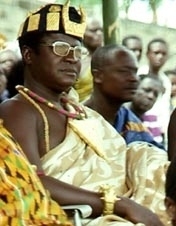 |
 |
 |
My adoptive father, Nana Asiamah II, Obohene and Nifahene of Kwawu
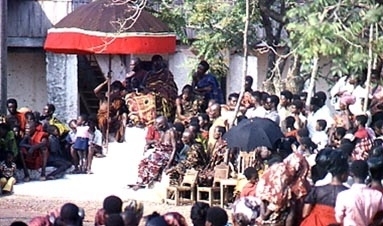 |
Obohene sitting in state at Ohantrase outside the Obo palace during an Adae Kese in Obo
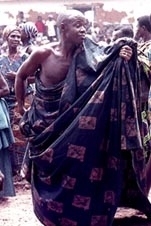 |
 |
War dances (by elder and ahenkwa) and Adowa (by a little girl) at Adae Kese
The Obo Kontihene, Nana Noah Adofo II, dances a war dance above left. He was my main teacher and guide in my doing my PhD research for the University of Ghana, Legon.
The man in the right photo is an ahenkwa, servant of the stool. He wears his cloth wrapped under his arms as a sign of respect. Even a chief or elder, when greeting a more senior chief, will temporarily bare his left shoulder (when wearing cloth) as a sign of respect.
The dance of the little girl is called "adowa" (deer). and is seen only for its beauty, and not as a war dance.
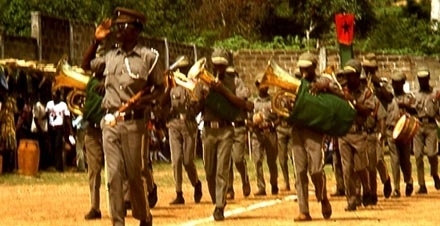 |
 |
War Dances from European Traditions
My military friends are not too happy when I describe a formal military parade as choreography. It is. The precision stepping, the rhythm of the marching, with or without a band playing, the practice needed to keep in sync, all put marching into the category of dancing. I believe that I did well in my own Canadian RCAF military training, on parade, because of my participation in square dancing as a teenager.
 |
 |
 |
Part of my participant observation was to be the horn blower in the Obo court
Paramount Chief, Omanhene
Kwawu is politically organized like any Akan oman, with a paramount chief, a chief of the interior, and four wings (Forward, Left, Right, and Rear). Obo is head of the Right Division. Here are a few pictures of the Omanhene or Paramount Chief of Kwawu.
 |
 |
 |
 |
Daasebre Akuamoah Boateng II, Omanhene (Paramount chief) of Kwawu
Linguists
The akyeame (poorly translated into English as "linguists") are identified by their staffs. Each linguist position is an office owned corporately by a matrilineage. Obo has seven linguists, including a Chief Linguist.
For a description of my discovery of the sacred black linguist staff ritual, see Apoma.
 |
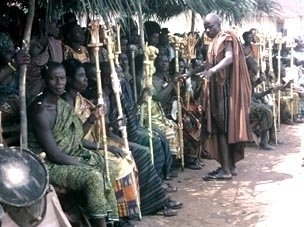 |
Obo linguists at a Kwawu Adae Kese (Afahye) held at Mpraeso
On the right side of the right photo, second person from the talking drum, one of the seven Obo linguists is a woman.
 |
 |
 |
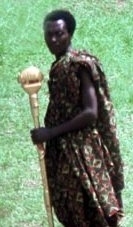 |
 |
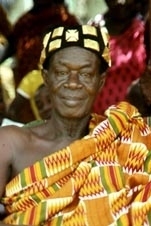 |
Mpraeso; Kwawu Chiefs
 |
 |
Obohene (right) and Queen Mother at an Adae Kese held at Mpraeso
 |
 |
 |
Talking Drums
 |
Files in the Religion set: |